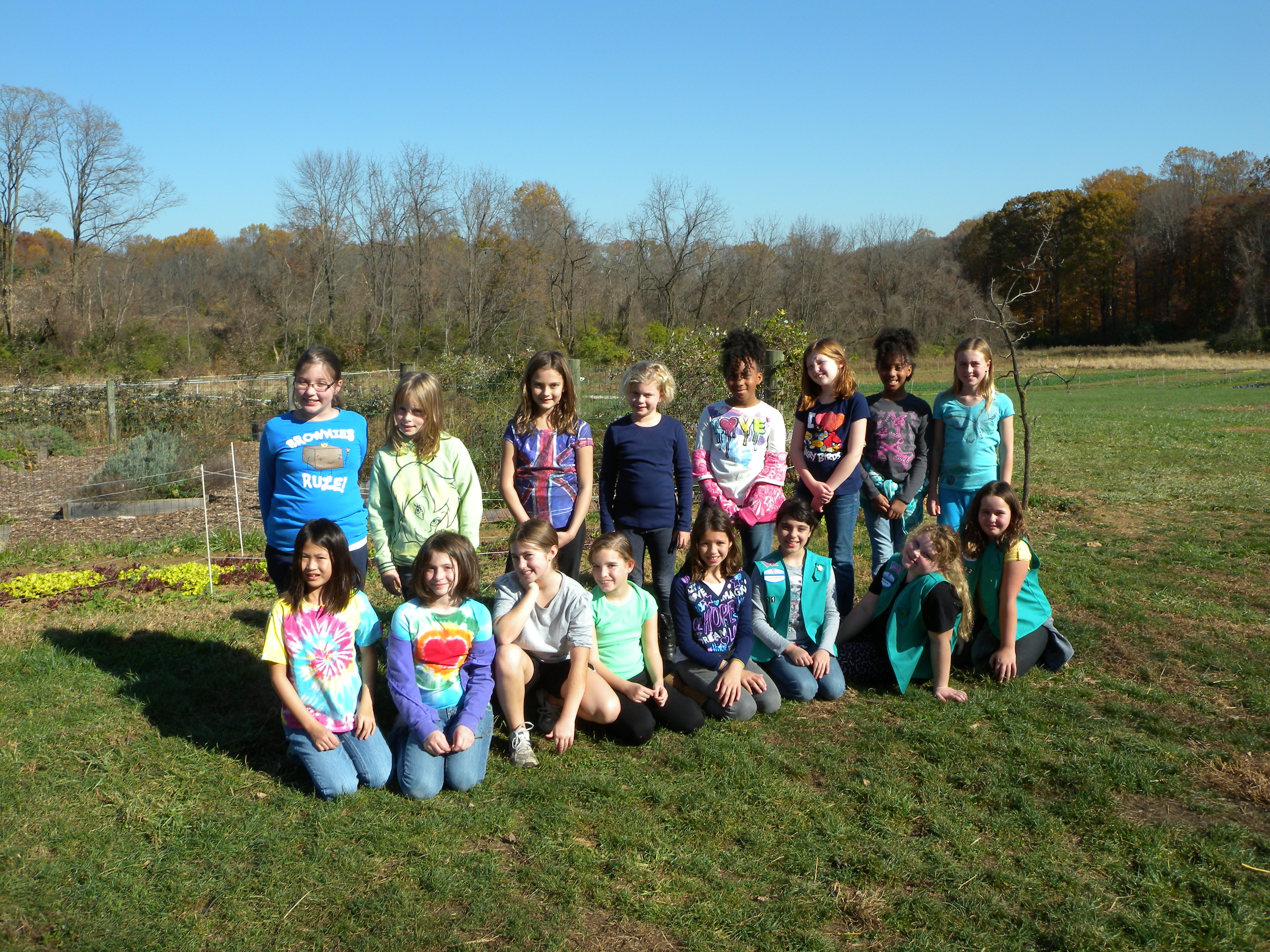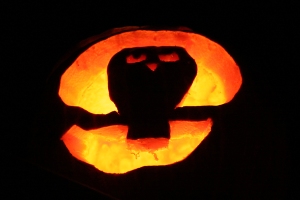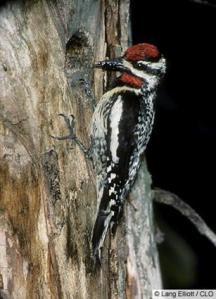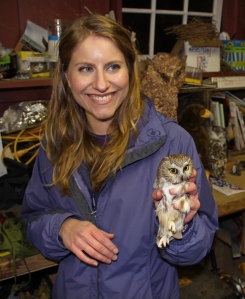
The natural world is filled with romance, beauty and enchantment, and every day seems to be Valentine’s Day outside if you look around. This time of year, in particular, the male waterfowl are beginning to perform their elaborate courtship displays on ponds and lakes in our area, as the handsome Hooded Merganser, pictured above, is doing. Do you see any resemblance in his hairdo to heart throb Elvis Presley’s famous hair? Guys, Elvis and mergansers may be on to something…Lesson # 1: A voluminous hairdo is sure to elicit female swooning.
Geese and swans are the ultimate romantics, with most pairs mating for life. Dabbling ducks, like mallards, and diving ducks, like mergansers, are generally more promiscuous and consequently have a wider variety of male displays. No matter their marital status though, all ducks and geese, like many other birds, spend a lot of energy on performing wonderfully ritualized mating displays to impress the females. This is lesson # 2, guys: Put effort into impressing your woman every day!
Don’t get complacent about attracting her, even if you are already married or have been together for decades. This could involve you getting back into using that gym membership that keeps shamefully showing up on your billing statement each month, buying her flowers for no reason or some other grand display of affection. If you’re having trouble thinking up something that will ‘wow’ her, take notes from this male Red-capped Manakin. Borrowing some of his moves is sure to put the steam back into your relationship!
Youtube video of moonwalking Red-capped Manakin

If that’s a little too flamboyant for your style, observe the suave Emperor Penguin’s quiet, deeply romantic courtship ritual in the “March of the Penguins” (a great date night movie!). This is lesson # 3, guys: Make time for and ritualize those intimate moments of romance.

Jane Austen depicted this provocative avian display in the following love poem. To spice things up, try reading this to your mate this Valentine’s Day over a glass of wine with Barry Manilow playing softly in the background:
“The Penguin” by Jane Austen
With a single indecorous groan
a glacier calves an iceberg the size
of a cathedral into the christening sea.
Along the icefoot, ritual courtship
flurries the frigid air into squawks
and plumage, the shuffled chase
that observers, stomping their feet for warmth,
call dance. And after?
After a belle’s dance card filled twice over
and a wallflower wilted with watching
territory staked step by measured step,
and the pecking order of kisses?
After the final bow,
after swallow-tailed males swooped
over the shimmer, the shiver
of jewel-and-sweat-scaled females?
Up from the bed of lost feathers,
the mating for life. Under a sky
literate with M’s, littered
with scavengers’ winged W’s,
two months stand still on the ice for him,
egg cradled on his melting feet.
For her the miles to retreating sea
to feed, then the longer walk back.
O cotillions and calling cards,
clergy waddling in wedding vestments,
marriage of property to title, awaiting issue,
how roughly do you compare?
Lesson #4 can also be gained from the male Emperor Penguin: Be sure to hold up your end of the parenting deal and then some! Check this out: clip from BBC’s “Planet Earth”. A male Emperor Penguin may incubate the egg for up to two frigid months while the female travels hundreds of miles to sea to feed. He loses up to half of his body weight while guarding the egg and fasting all winter, patiently awaiting her return in howling winds that can reach 120 mph. How’s that for parental dedication? Next time your wife asks to go on a vacation for two months while you watch the kids, remember the selflessness of the emperors and say yes!
Lesson # 5: Let go of your inhibitions and macho inclinations and dance with her! What woman doesn’t enjoy dancing with her man? Take ballroom dance lessons with her if you’re unsure and need more confidence before stepping out onto the floor. For a little avian inspiration, watch this video from BBC’s “Life” of Western Grebes performing their beautiful courtship ballet. If that doesn’t make you want to dance, I don’t know what will!

And did you catch the other lesson in that video clip? Shower her with fish! Er, I mean gifts. It’s probably not a good idea to shower her with raw fish unless she likes sushi. Otherwise, surprise her every now and then with little gifts that make her feel special (Lesson # 6!).
I hope everyone has a wonderful Valentine’s Day filled with love and birds!
And don’t forget to show how much you care about birds and their conservation by participating in the 16th annual Great Backyard Bird Count this weekend! Visit the website to register and for more information. All that is required of you is that you identify and count birds for at least 15 minutes anytime from Feb 15-18 and enter your results online.
Have fun!
~Blake
P.S. Since Valentine’s Day is about love and all things precious, be sure to read George Armistead’s excellent article about the top ten cutest birds in North America on the ABA blog! It’s sure to brighten your day.



















































